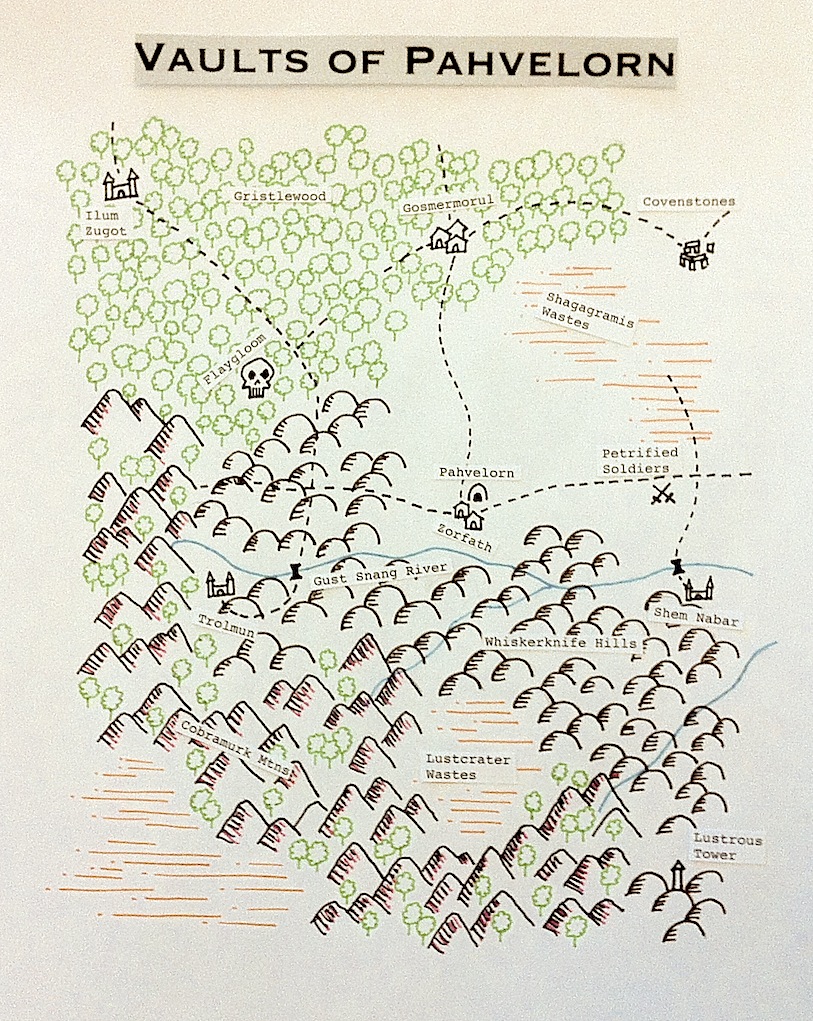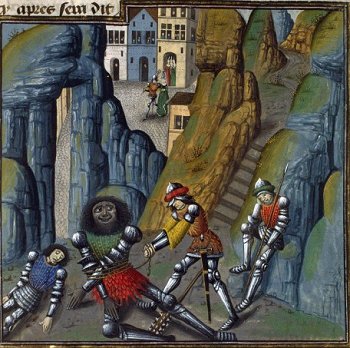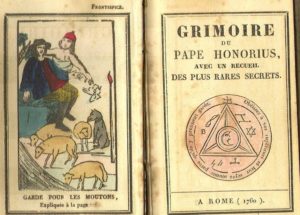In Pahvelorn, you get XP from treasure recovered from the underworld or perilous wilderness. This happens when you spend the GP so recovered. Note that you don’t get XP just from spending money, it has to be money derived from recovered treasure. There are lots of good explanations about why this works well in D&D, but here’s one over at the LotFP blog if you’re curious.
This should very much be considered a draft set of rules. I’ve used some of these systems in play before, and the community at large has had, it seems, a positive experience with carousing as a game mechanic, but generalizing these ideas to other activities (magical research, alternatives for clerics, etc) very much seems to be an active and ongoing project (for example, see this post over at In Places Deep and this one at Kill it with Fire).
ALL CLASSES
- Upkeep. Choose a standard of living: squalid, standard, or luxurious. Squalid gives you a -1 penalty to pretty much everything due to poor nutrition and low-quality rest. Living luxuriously won’t help you swing a sword, but it might affect some reaction rolls and may attract attention (both good and bad). Living squalidly may give you some reaction roll bonuses if you are trying to blend into poorer social groups. Preliminarily, upkeep costs per week are (rounded up, if fewer days than one week are spend in civilization between adventures): 1 SP (squalid), 5 GP (standard), and 100 GP (luxurious). I reserve to right to tweak those as I see fit.
- Other Expenses. Repairing or replacing weapons, paying retainers, purchasing passage on a caravan, etc. Some other referees only like to give XP for spending on things that you don’t get other utility from, but I don’t have that concern. As long as the source of the money was treasure, anything is fair game.
- Advertising. Advertising may be the only way to find certain specialized kinds of retainers. I will be using something similar to the system in the Ready Ref Sheets. This allows you to spend from 1 – 600 GP per week looking for special kinds of hirelings.
- Strongholds. Traditionally, characters build a stronghold at name level (for fighters, this is 9th level, Lord; for clerics this 8th level, Patriarch). Magic-users often build towers to study and practice their dark crafts, though name level is not as clearly defined (though it is probably the Wizard title, gained at level 11). In any case, to have the funds for such a venture, you need to start saving. Once you locate a stronghold site, even if the area is not totally cleared, you may start to put money towards its creation.
- Big Ticket Items. Like a ship, for example. You can take XP without spending the GP if you bank the funds with some reputable moneychanger, but if you spend that money on anything else you will take an XP penalty in the future. Maaaaaybe you can do this for strongholds too.
- Goals. Perhaps your character collects pottery from a particular lost civilization, or is obsessed with any tidbit of knowledge regarding elves and Elf-Land. If you spend money on a PC fascination, you can take XP for that expense.
- Rites, ceremonies, marriages, funerals, naming ceremonies, consecrations, purifications, sitting in judgement, and exorcisms. I have had so many ideas for this recently, I think they deserve a separate post. Also, remember, clerics are widely respected, but as demon hunters and travelling law men, not sedentary priests.
- Carousing. This can be either public (a feast) or private (wine, lotus powder, etc).
- Competition. Wrestling, jousting, non-lethal gladiatorial combat. The specific options will vary based on location.
- Magical Research. See here. Money spent this way should be recorded and can be used towards magical research rolls later.
- Carousing. See fighter entry above.
- Surveillance. This should be appropriate to your character concept (e.g., an urban rogue can surveil city contacts whereas Robin Hood might be talking to shepherds and watching the comings and goings of the Sherif’s soldiers). This can get you some sweet rumors or threat level information that you might not be able to discover any other ways.
- Poisons. Brewing or buying; both require GP.
I think that should be enough for now.




